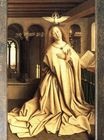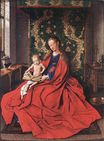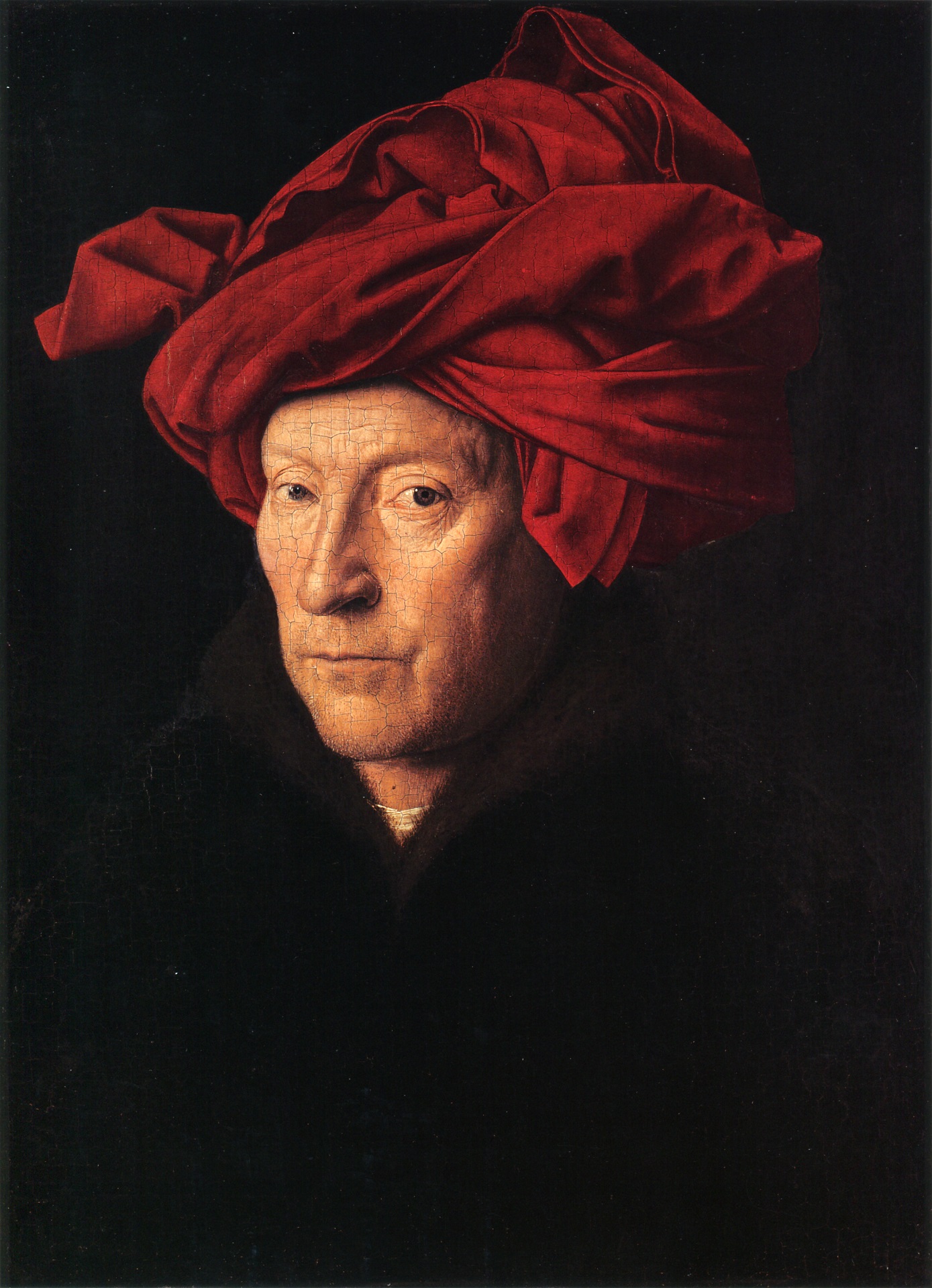Jan van Eyck - A Man in a Turban. Self Portrait 1433
 |
 |
 |
 |
 |
 |
 |

A Man in a Turban. Self Portrait 1433
26x19cm oil on wood
National Gallery, London, UK
<< Previous G a l l e r y Next >>
From National Gallery, London:
The painting is signed and inscribed in an elaborate way on the frame, which is the original. The top inscription, which uses some Greek letters, is a punning allusion to the painter's name: 'Als Ich Can' (as I/Eyck can). The bottom inscription, in Latin, gives the name of the painter and the date: 'Jan van Eyck made me on 21 October 1433'. The letters are painted to look as though they have been carved.
The painting, so carefully inscribed, was presumably one of particular significance to the painter, and it has been suggested that it may be a self portrait. The direction of the man's gaze also suggests this.
Van Eyck uses light and shade in a subtle and dramatic way: the sitter seems to emerge from darkness, his face and headdress modelled by the light that falls from the left. The viewer is drawn towards the image by the penetrating gaze of the sitter.